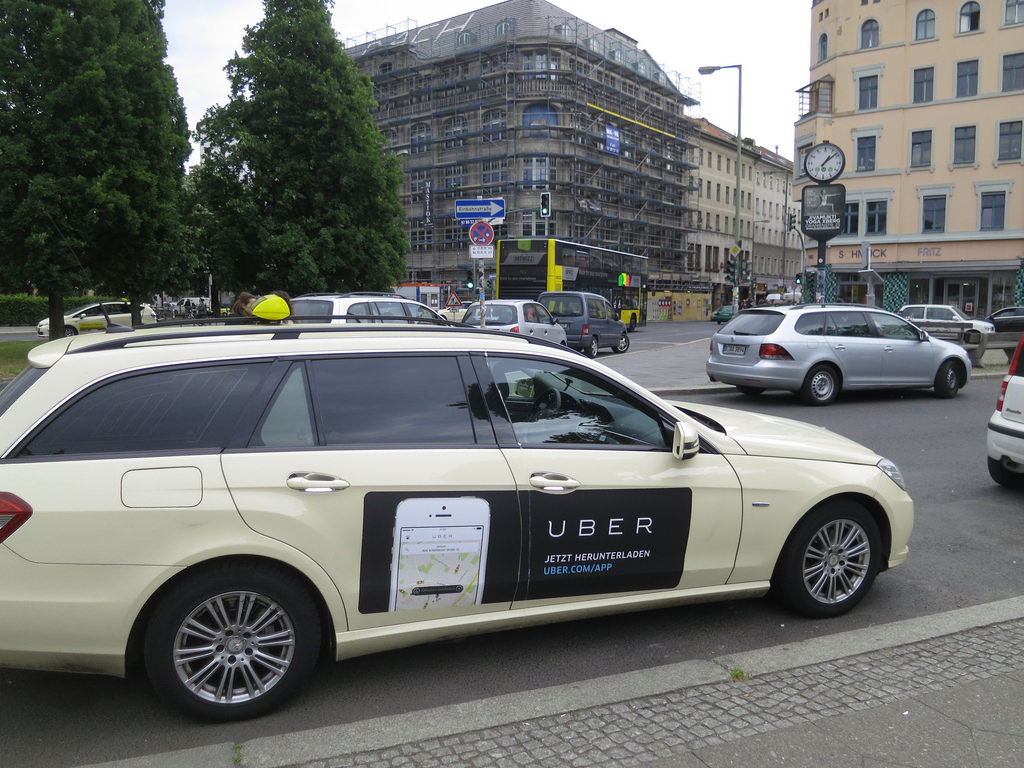 NEWS
NEWS
 NEWS
NEWS
 NEWS
NEWS
Uber, Inc.’s ridesharing service is currently available in 63 countries, and will soon be fully legal in Canberra, Australia. If you have ever tried their service, you know how convenient it is, often cheaper than a traditional taxi. But booking a ride at the wrong time or place could cost you four times that of your usual cab fare.
According to Uber, surge pricing is when “rates increase to ensure reliability when demand cannot be met by the number of drivers on the road.” This usually occurs during rush hour or when there’s heavy rain, instances wherein people can’t wait to get to their destination. Despite the increase in price, some commuters still go with Uber, but researchers from the Northeastern University determined that there’s a way to bypass the surge pricing.
The study, Peeking Beneath the Hood of Uber, was led by Christo Wilson, assistant professor in the College of Computer and Information Science, and conducted with Le Chen, PhD’16, and associate professor Alan Mislove.
To conduct the research, over a four week period the researchers used servers that ran Uber apps and pretended to be people from 43 different GPS locations in San Francisco and Manhattan, as these two cities have the second and third highest number of Uber drivers in the U.S. The researchers were able to determine that cities have surge areas that, when plotted on a map, look like pieces of a jigsaw puzzle, but they were not able to determine how Uber concluded which areas fall into the surge category.
“We did a lot of correlation analysis looking at how many cars were getting booked over time and how many cars were available, and you do see high correlation between supply and demand and the surge,” says Wilson. “So the system is definitely responding to supply and demand changes.”
The researchers also went into Uber forums where they learned that drivers colluded to drive up the price. Kicking off surge pricing, some of the drivers in a certain area will all go offline to make it appear there is a low supply of Uber drivers. This allegedly spikes up the price, as there will be more commuters than available cars. The researchers were not able to prove if this actually is true.
Based on the data they gathered, the researchers came up with a few tips to help commuters lower their Uber fare. The first is to wait it out. Wilson stated that most price surges are over in five minutes, so waiting to book a ride may just shave 10-20 percent off of your Uber fare.
“We see that around 40 percent of surges only last five minutes, while about 70 percent of surges last 10 minutes or less,” Wilson revealed to USA TODAY. “This essentially means that if you observe surge prices on Uber, your best bet is to just wait it out, because they typically don’t last long.”
Another tip is, if you don’t mind getting a bit of an exercise, is to walk a few blocks away from the surge area. To know where you’re heading to get lower fares, you can look at the prices being offered in adjacent surge areas, as each area has a different surge multiplier. Wilson and his team are developing detailed surge-area maps that they will make public soon so Uber riders can save on their fares.
Support our open free content by sharing and engaging with our content and community.
Where Technology Leaders Connect, Share Intelligence & Create Opportunities
SiliconANGLE Media is a recognized leader in digital media innovation serving innovative audiences and brands, bringing together cutting-edge technology, influential content, strategic insights and real-time audience engagement. As the parent company of SiliconANGLE, theCUBE Network, theCUBE Research, CUBE365, theCUBE AI and theCUBE SuperStudios — such as those established in Silicon Valley and the New York Stock Exchange (NYSE) — SiliconANGLE Media operates at the intersection of media, technology, and AI. .
Founded by tech visionaries John Furrier and Dave Vellante, SiliconANGLE Media has built a powerful ecosystem of industry-leading digital media brands, with a reach of 15+ million elite tech professionals. The company’s new, proprietary theCUBE AI Video cloud is breaking ground in audience interaction, leveraging theCUBEai.com neural network to help technology companies make data-driven decisions and stay at the forefront of industry conversations.